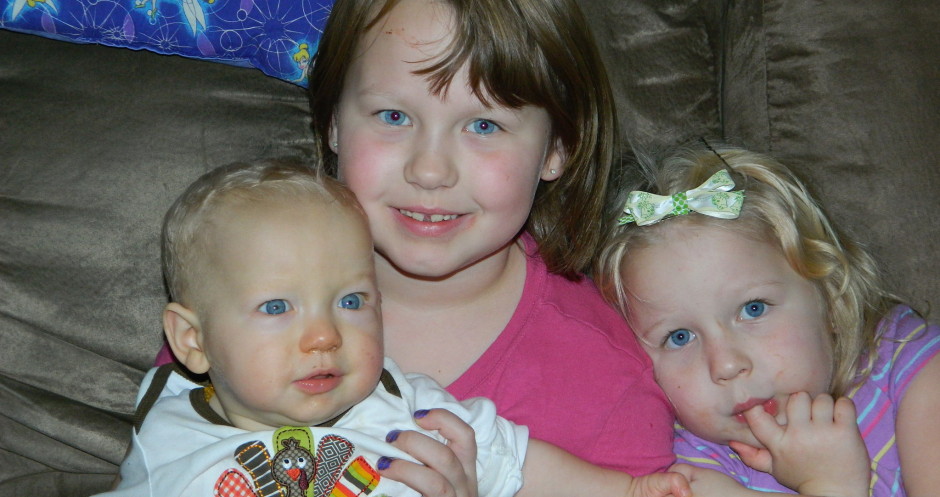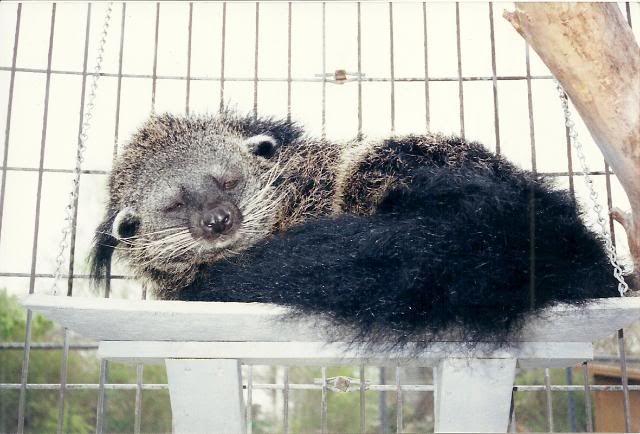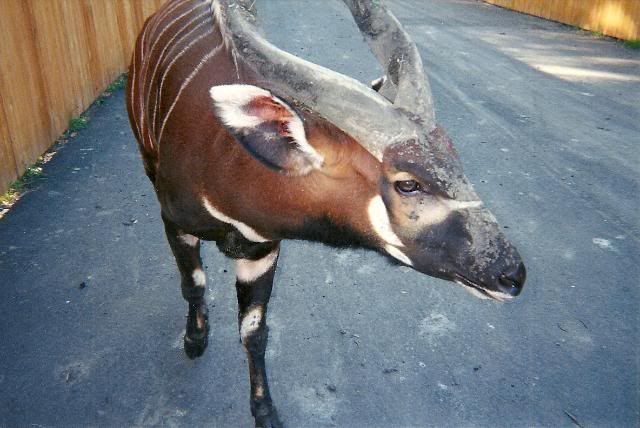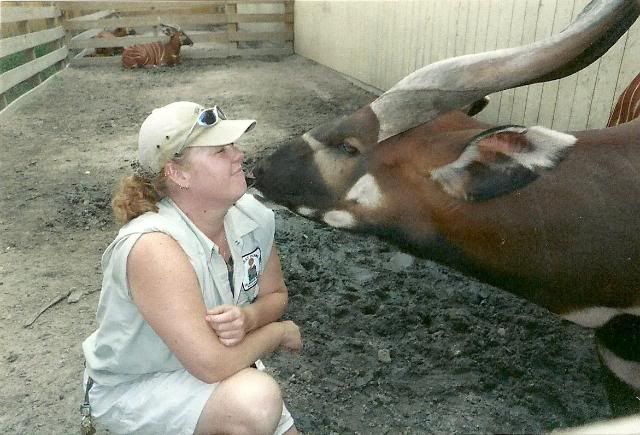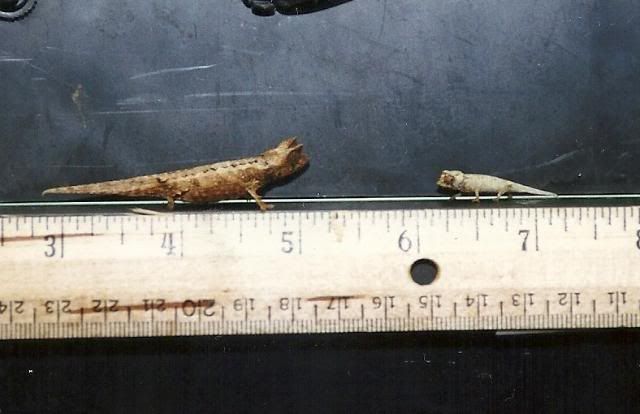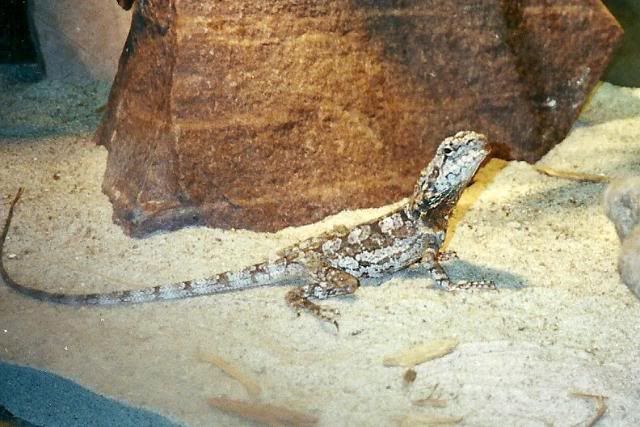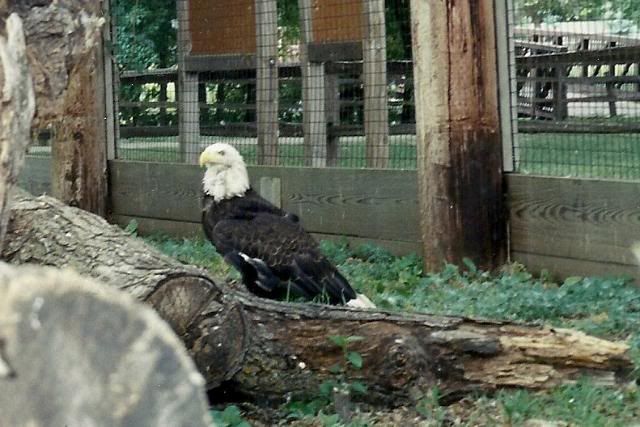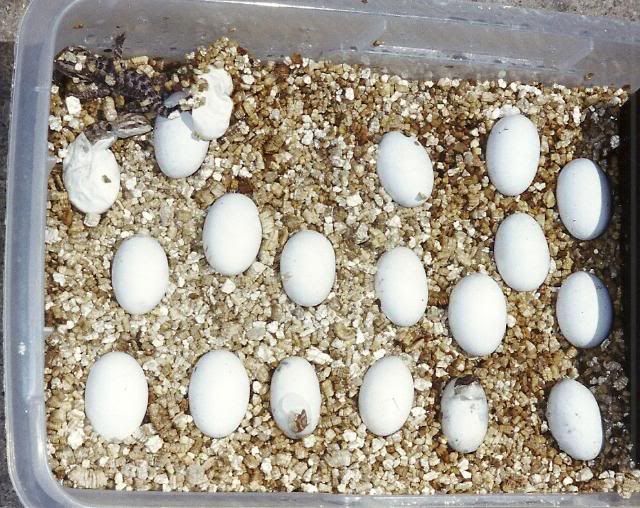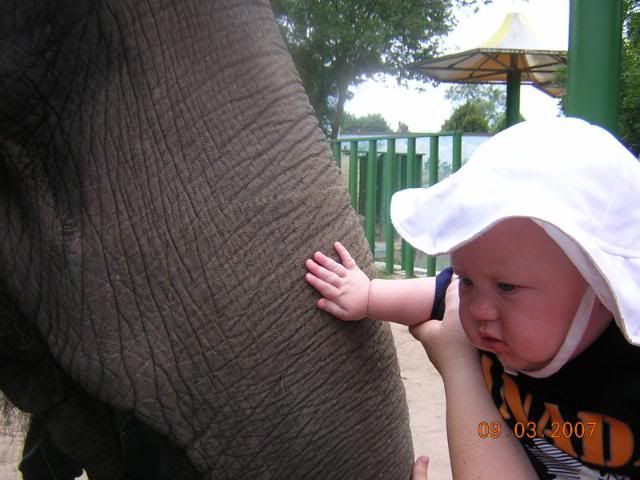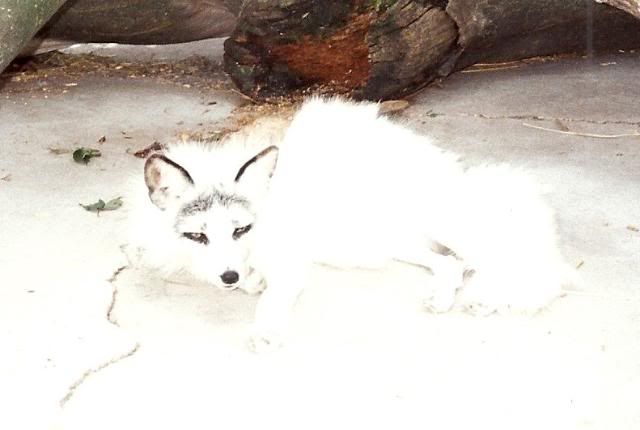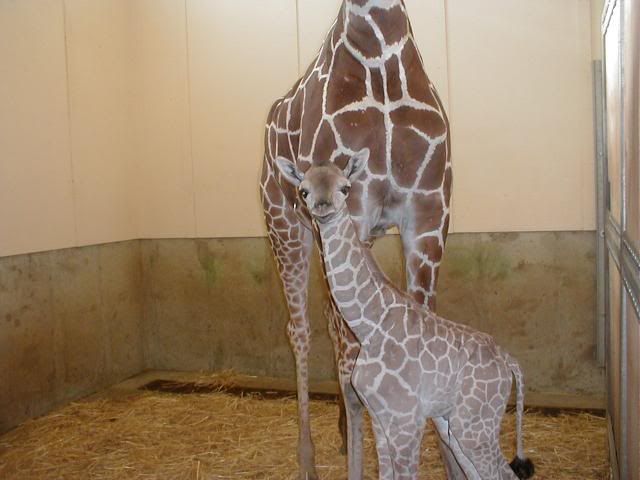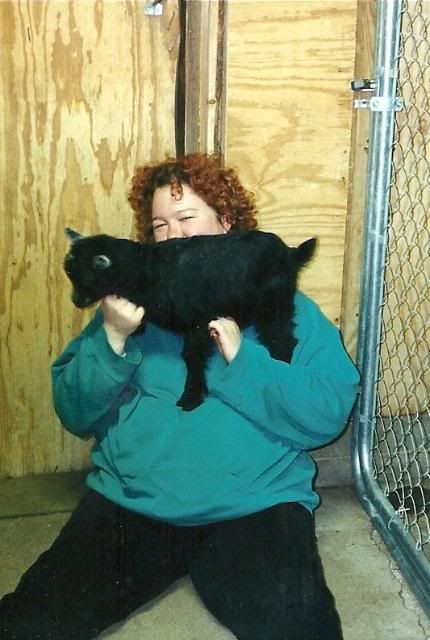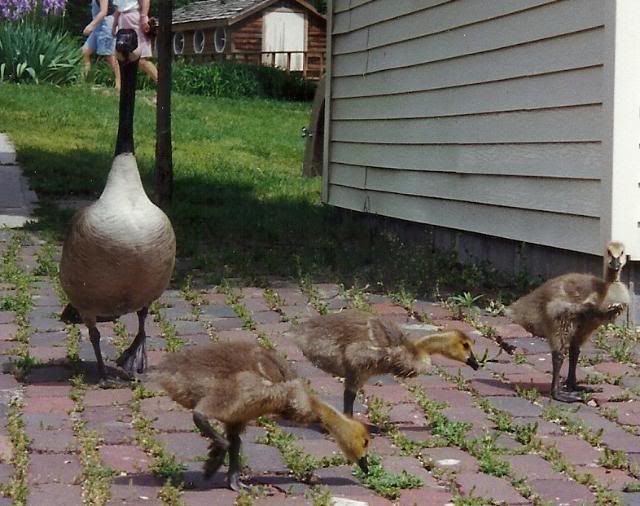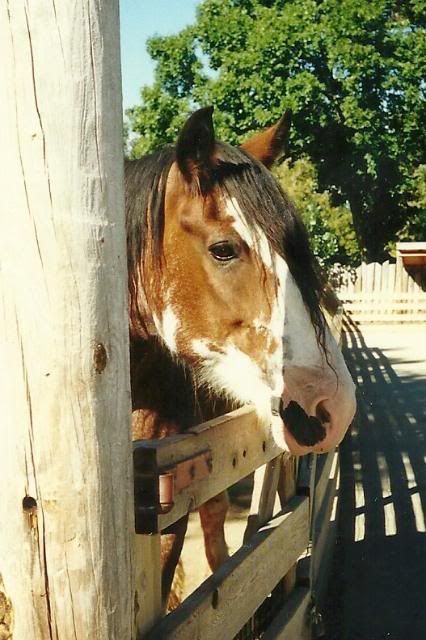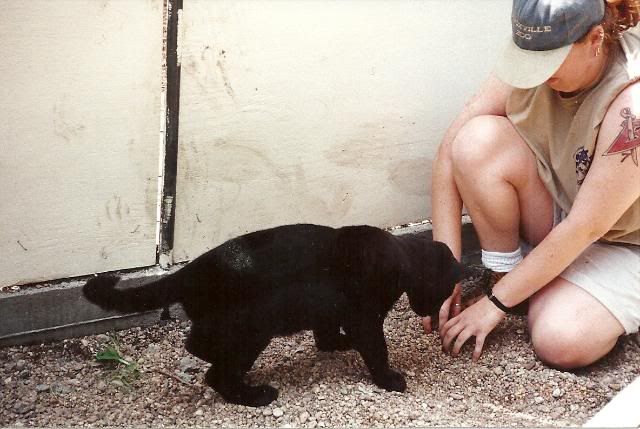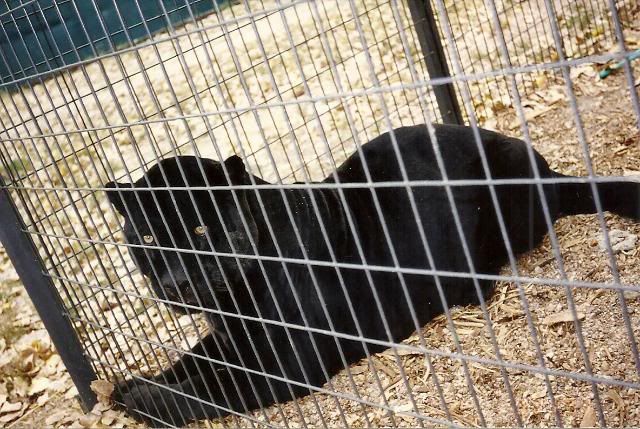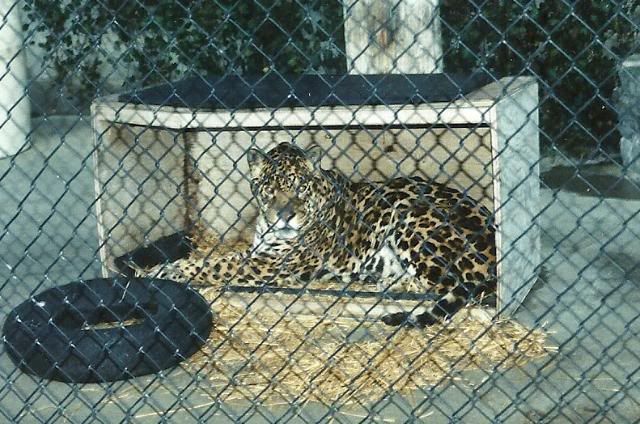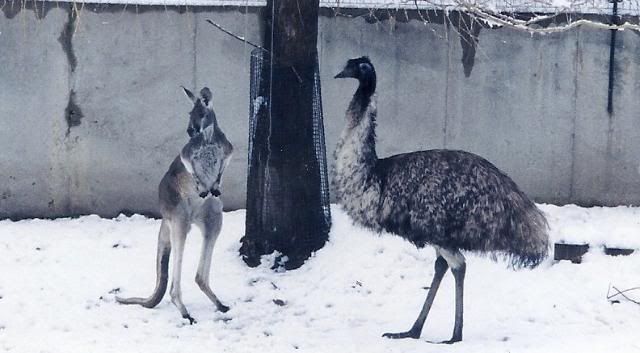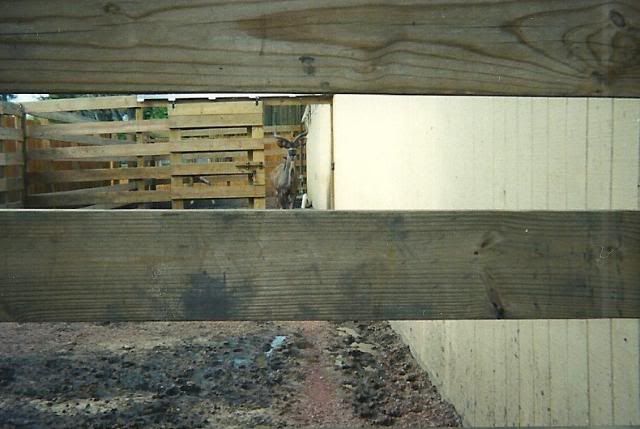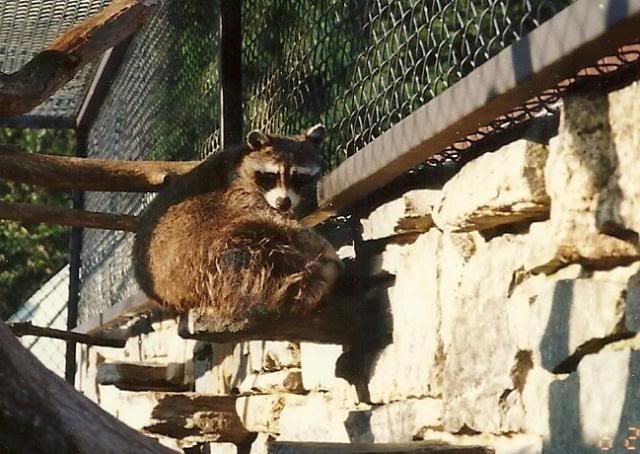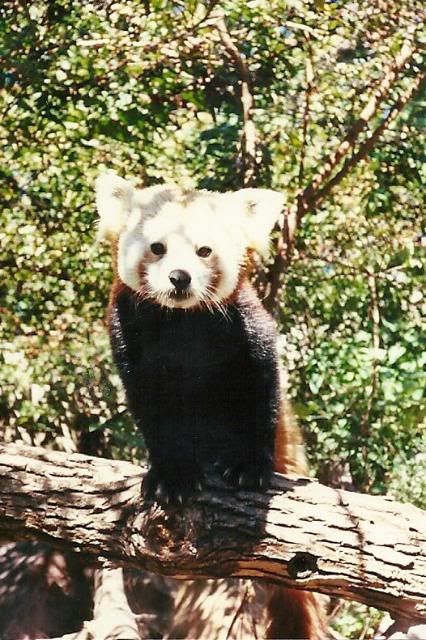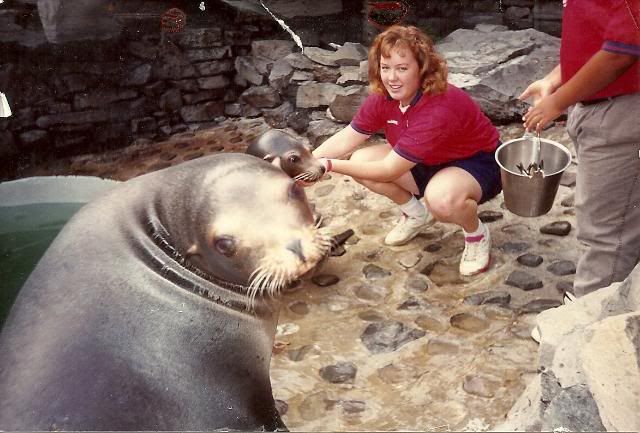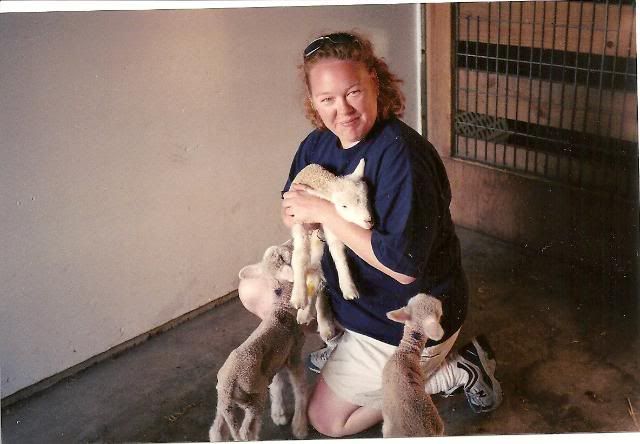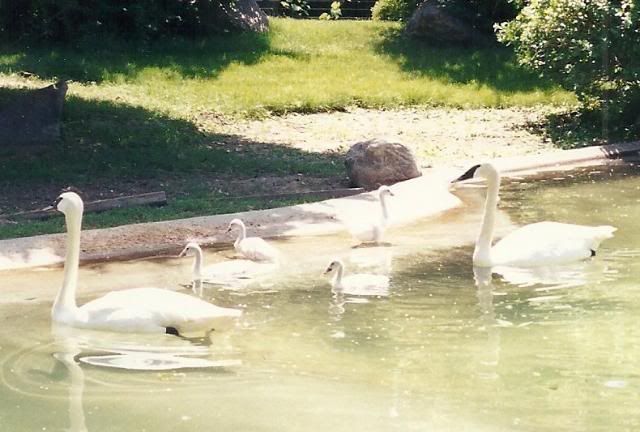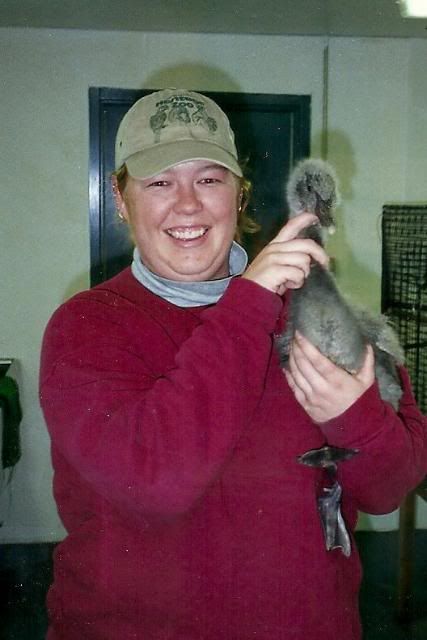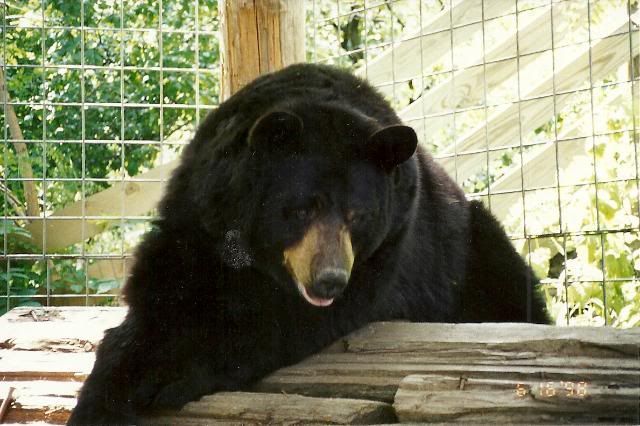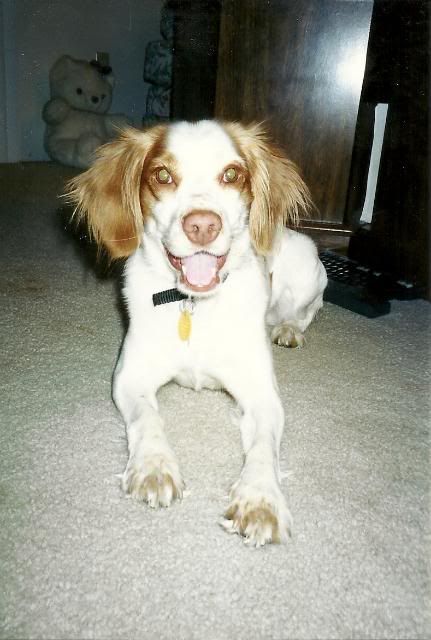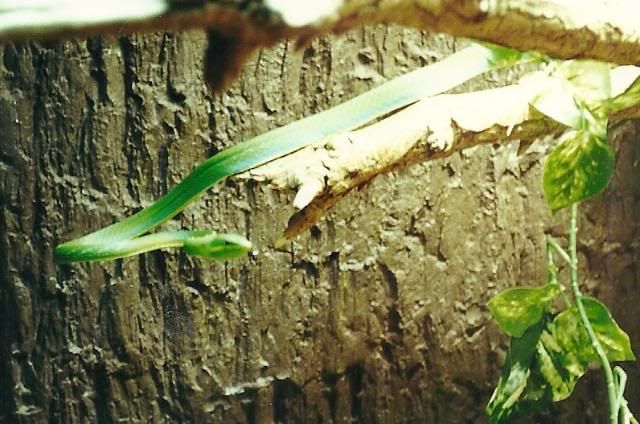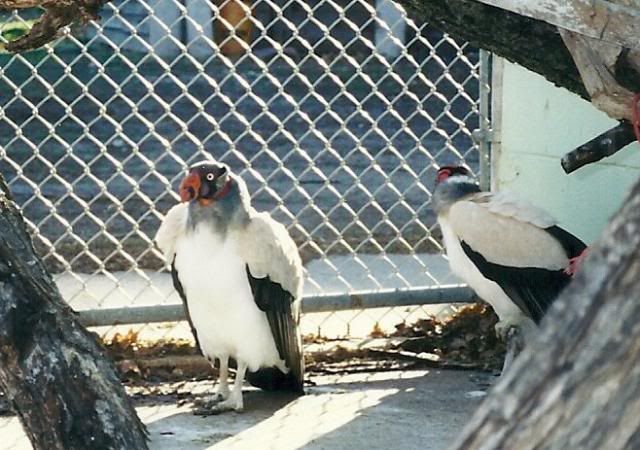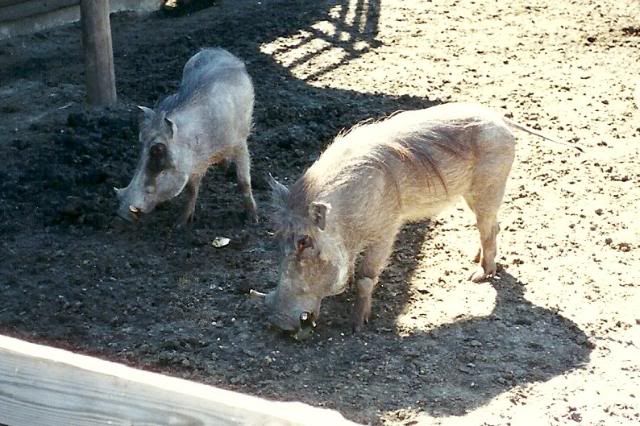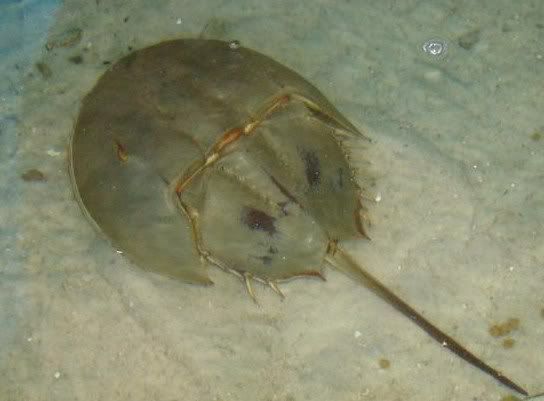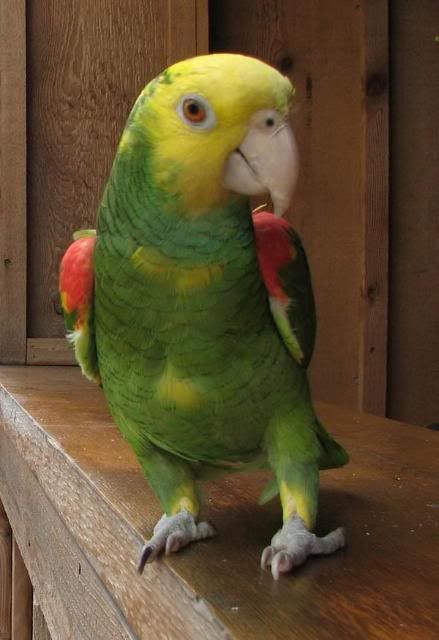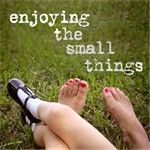Two of the points Sonyea’s class is focusing on is the ABCs and “things grow and change.”
One thing I’m good at is talking to kids about animals. Since I have a bunch of photos of the animals I’ve worked with and some free time, I put together this little presentation of animal photos of animals that I’ve worked with. There are 3 stock photos in the bunch that I grabbed from the internet. Not bad, not bad!!
A-What’s the first animal you think of when you think about A?
Meet Tripod. At the time this photo was taken, this alligator was at least 75 years old. Wild caught because it lost a leg in a feeding frenzy in North Carolina. It was not tame, just used to people.
B-Big Brown Bat
This was a wild caught bat, found in the Town garage in Grand Island, Nebraska. They of course brought it to the zoo. We put it on display, fed it for a few weeks to make sure nothing was wrong with it and we released it in my friend’s backyard. Never to be seen again. Bats are amazing for the food chain because they eat mosquitoes!!
B-Binturong-Bearcat-The mascot for Binghamton University.
It’s not a bear, it’s not a cat. It’s an animal that resembles nothing else so it’s classified all by itself. They have a prehensile tail, can use it like a hand. They eat meat and vegetables and fruits.
B-Bongo
Antelope that lives in the wooded areas in Africa. They are born red with white stripes and their horns grow as the animal grows. They never fall off like native deer.
They look the same grown up as they do as babies. Only change is they get taller, heavier and their horns grow longer.
C-Chameleon-There are many different kinds. Some big, some small.
They are the masters of camouflage.
They barely change as they grow.
C-Cobra-one of the most deadliest snakes in the world. Found in Asia.
C-Coyote, found in New York State. Anyone seen one in their backyard?
D-Dragon. Are dragons real?
This animal sits around waiting for food. Bugs, small mammals, frogs or even a bird if it flies by close enough. When an animal comes by that’s bigger than it, it fluffs up it’s mane, opens it’s mouth real wide and hisses. The Frilled Dragon has a long tail and spends much of it’s time in low bushes or sunning itself on flat rocks in the dessert.
D-Ducks There’s lots of ducks around the world. They all need open water of some kind. This picture is a Ruddy duckling. They were swimming in the sink. We hand raised all of our baby ducks to be sure they weren’t taken by predators.
E-Bald Eagle. Anyone seen this in their backyard? I’ve only seen a real live Bald Eagle on 3 occasions. Once in the pool in Conklin, once while driving home and once at the zoo in South Dakota. They are making a strong comeback after being close to extinction due to poisons.
E-Eggs
These are baby bearded dragon eggs. Small lizards that make excellent pets. They are found in Australia. They eat bugs when little and grasses, green leaves when bigger.
I also took care of a lot of bird’s eggs. Parrots and ducks and snakes and lizards. They have to be kept warm and humid. The birds eggs have to be turned multiple times a day to survive while reptile eggs can’t be touched. Birds eggs are hard to the touch while reptile eggs are soft and leathery.
E-Elephant
I’ve never actually worked with elephants. I think I wouldn’t like it. They are smart and I am not. Elephants never forget and I forgot what I had for lunch yesterday. I just wanted to add in a baby picture of Sonyea.
E-Elk
I haven’t actually worked with these guys except to throw food over the fence for them and the bison they lived with. They are really cool when their antlers are huge. Every year, they fall off and a new set grows in, bigger and better. With these guys, our vet would put them to sleep for a little bit and we’d cut them off. The only reason for this was so that they didn’t hurt each other or the bison. They were impressive EVERY YEAR!!
F-What is pink and flies in large groups?
Flamingos. They are pink because the shrimp they eat is pink. Without the pink in their food, they’d be almost white. They live in large groups and stand on one leg to keep themselves cool. Their beak works like a spaghetti strainer. They get a large mouthful of dirt/water and push it. What remains is the shrimp they eat and they swallow it.
F-Fox
This is an arctic fox. It lives where it’s very cold most of the year. They bury their food in the snow/ice so that when they are hungry they always have food to eat. In the winter their coat is very thick and white. In the short summer their coat is thin and gray.
G-Gila Monster
This is my favorite lizard ever. Their bite will not kill you but if you get venom, you’ll wish you weren’t alive. Their venom is injected through the back teeth so in order to stop their prey they have to chew on it. This guy wasn’t tame by any means but he was easy to hold on to let people touch. Found in Southwest United States.
G-Giraffe
There is no bigger rush than standing under an 18 foot giraffe first thing in the morning and he drools on you square in the face.
The baby was born four days before I moved to another zoo. I was so lucky to work with her for a few days! They can be frustrating to work with though. If a 12 foot giraffe doesn’t want to go outside, she will not go outside. No matter how much you poke and prod and try to run over them with a vehicle.
G-Goat
This little boy’s name was Shocker. We got a phone call from a little girl in Nebraska who said they found a goat walking down the street. We named her Casey after the little girl who found her. A week later, we found a baby and since it was a shock to find him, that was his name. He was practically hand raised since Casey was so laid back.
G-Goslings (baby geese)
Somethings change when they grow. Baby birds often look nothing like their parents. Goslings are no different. It takes only a few short months for goslings to grow into a full grown Canada Goose where you can’t tell the difference between boys and girls.
H-Horse
This is Carrie the Clydesdale. A very large grandma at the zoo in South Dakota. She was in our petting zoo and loved children. She was great at giving us rides back to the barn every night and had a lot of medical problems but she was a great horse.
I-Iguana
You can find lots of iguanas for sale as pets. They are not easy to take care of. They have special foods they have to eat, they need lots of room to climb and need a home that is really hot. They do not make good pets at all. Even at the zoo they were difficult to take care of where we could monitor their food and temperatures. Also, their tails hurt when they hit you with them.
J-Jaguar
Baby Maya at only a few weeks old.
Momma Suzy!
Old Man Strider! Jaguars are the largest predator in South America. They come in either spotted or black. When you look at the black jaguar in the proper light, you can see their spots. They are excellent tree climbers and very strong! Strider used to be someone’s pet. He was given to the zoo as a 2 year old because he was too dangerous to keep in the house. Just because it’s a cat doesn’t mean it’s a good pet.
K-Kangaroo
They are found in Australia with Emus. They have very strong back legs so they can run really fast. Both kangaroos and emus. Girl roos have a pouch to keep their babies in because they are marsupials. Emus lay large green eggs.
K-Kudu
Another large antelope found in Africa. They also have very large spiral antlers. They live in large herds and eat grasses and shrubs and tree leaves if they can reach them.
L-Lynx
There are few different species of Lynx. This one is Leonard the lynx from Canada, eh.
They have large feet, their toes splay out when they walk around because it’s usually pretty snowy where they live and they act as snow shoes. They eat anything they can catch, squirrels, rabbits, woodchucks.
L-Lovebird
This is Lindsey. She was a lovebird that lived in my house. They make excellent pets as long as they are kept in pairs, in a big enough house with plenty of food and water. I would love to have another pair of these sometime and make babies. How fun that would be!!
L-Lion
Nirobi eventually went on from here to live at Disney World. He was one of the first boy lions to live there when they opened Animal Kingdom. Him and his sister were also former pets. They were big and scary really. Lots of fun to chase around though.
M-Macaw
The largest of the parrots. The macaw lives for up to 70 years so if you want a pet that will destroy your house with their huge beak and live longer than you… yup, this is the pet for you!
M-Monkey
This is Sammy the Capuchin monkey. They live in South America and are real pain the rear end. They will do anything to remove the pocket from your shirt to find treats. They will pull out as much hair as they can get and will steal your keys from you the second you turn your head!!! They also make really bad pets!! They are also very smart!
N-Newt
This was “Fireman.” We found him while camping. He’s a red spotted newt. They live in your backyard if you look close enough. It’s an amphibian so they have to have clean water nearby. Their skin is very thin and sensitive to any dirty water. We need clean water for ourselves and for the amphibians of the world.
O-Owl
This is a young owl that we helped raise at the zoo. Owls are nocturnal, meaning they stay awake all night long hunting and calling out their songs to mark their territory. There are a lot of different species of owls found all around the world. They eat small mammals like squirrels, mice and chipmunks.
P-Penguin
Penguins are not found in the North Pole where the polar bears live. They are cold weather animals just down south of the equator. There are also warm weather penguins like this one. The Black Footed Penguin. Lots of zoos keep them because they don’t require cold air. They need lots of room to swim and rock caves to make nests. Once a week, we made them stand in a line and stand on the scale to monitor their weight.
P-Porcupine
These guys are found here in the United States. They are nocturnal and spend most of the their nights roaming around looking for food. They are foragers who eat fruits and veggies. One thing that isn’t true about porcupines, they can’t throw their quills at you. They will easily fall out if you touch them and they are hard to remove from your skin. Ouch!
P-Pronghorn
Every year in South Dakota, the keepers hand raised the baby pronghorn. They were very skiddish and easily spooked if left to be raised by mom and dad. Plus, it was great for the public to get up close to the babies in their side pen by the nursery. They bottle fed 8 times a day in the first few weeks.
P-Python
Luckily, we don’t have any snakes this big found in the wild around here. Down in Florida, there’s a ton of them. A lot of people find them cute when they are little so they get them as pets and next thing you know they’ve eaten your house cat or dog. They are very dangerous to people if not taken care of properly. They are best left to the experts.
Q-Quail
The vet in South Dakota used to raise these guys every year. We’d get the babies at the zoo and feed them, grow them up and then feed them to the animals. To some people that’s sad and cruel but animals have to eat and have toys every now and again.
R-Raccoon
This is a very rare albino raccoon. She was pretty old. She was taken from the wild because she was different. She probably wouldn’t have survived anyways since she wouldn’t have been able to hide.
This is what everyone expects a raccoon to look like. That’s Rocky. You probably have a bunch of raccoons living around your house.
R-Red Panda
You can find the red pandas living at the Binghamton Zoo now. Next time you go, look for them!!
They are not actually “pandas.” They just have the similar markings on their faces. They are nocturnal and spend most of their time in the trees eating lots of different foods but mostly bamboo. They are very endangered in the wild so you’ll find a lot of babies in zoos to help build up the population on Earth.
R-Road Runner
You’ll also find these in at the Binghamton Zoo at Ross Park. He won’t be chasing any coyotes though. Meep Meep! They are found in the desert in Southwest US.
S-Seal
This is a rescued Pacific Harbor Seal. You can find them in the Northwest. She was rescued after mom died and brought to the Aquarium in Niagara Falls to live out her life. She was pretty old when I worked with her and she’s still alive and swimming there now.
S-Sealion
You can still find Jody and Cara living at the Aquarium in Niagara Falls. They were great fun to work with. They had lots of fun behaviours that I could work with. The kisses were the nastiest ever because fish guts would get stuck in my hair.
You can tell the difference between seals and sealions just by looking at their heads. Sealions have external ears, seals don’t.
S-Sheep
These guys came to the petting zoo in South Dakota just before I left. They were fun to bottle feed and have them follow us around. You can find sheep all over the world. Domesticated for food, clothing and milk.
S-Skunk
You’ll surely smell these in your back yard if you spook it. Stay away from skunks. You won’t always find them black with a white stripe. The one I saw in my back yard a few years ago was mostly all black!! I thought it was a cat at first.
This was Oscar. He was a great friend that I met in Nebraska. He actually started out living in New York, someone had them as a pet and then moved to Nebraska like I did. They are illegal to keep as pets there so he was brought to the zoo. He ended up moving to South Dakota with me and we were great friends for a long time even though I was allergic to him. He was the best at snuggles!
S-Stilts
Here’s a great way to see how things grow and change. These baby stilts (water birds) had to be taken off exhibit because they were so small, they fit through the cage mesh. After growing for a few weeks in this room, they were moved back on exhibit. One of my favorite birds, ever!!
You can see how long their legs/beaks will grow!!
S-Swan
T-Tiger
There are more tigers living in the United States than there is in the wild. Sad, very sad!
T-Turtle
This is a painted turtle. They only grow, they don’t change. This little baby was just a few weeks old when I found them in our turtle pond.
U-Ursus
I had a difficult time coming up with an animal that began with the letter U. I even had to resort to asking my friend google.
Every animal has two names, sometimes more depending on the animal. One (or more) common name and a scientific name. The scientific name is what the animal is referred to around the world.
Ursus, is the scientific genus name for the bears.
V-Vicky
Sonyea’s dog is named Vicky.
V-Vine Snake
One of the best animals when it comes to camouflage is the vine snake. Looks just like a tree branch/leaves in certain trees. They eat small mammals and birds when they can catch them.
V-Vulture
Ferdinand and Isabella were King Vultures. One was injured in a zookeeper accident with a shift door and the other was very pushy. It was difficult to work with them but they were very very cool to look at!
W-Warthog
Found in arid areas of Africa, they love to dig in the mud to cool off.
W-Wolves
I once watched the black one jump the 15 foot fence!! Scary!! North American timber wolves are found around much of the United States now. Most people are scared of them though because they are predators and hunt in packs. Humans have nothing to worry when it comes to wolves. You can also find these at the Binghamton Zoo
X-Xiphosura-Horseshoe crab
Another animal I had difficulty finding when thinking about the letter x. Thank you google for finding the scientific name for me. Horseshoe crabs are found in the oceans around the world.
Y-Yellow headed parrot
Me and parrots don’t get along. I have no idea why that is. I’ve always had difficulty working with parrots. This one was especially mean to me. She would climb down off the cage to chase me down to bite my feet. There was no holding them on my hands/arms. Sticks only.
Z-Zebra
Everyone knows that zebras are black and white. Did you know they are black skin with white hair? Yup, it’s true!! There are few different species of zebras in Africa.
